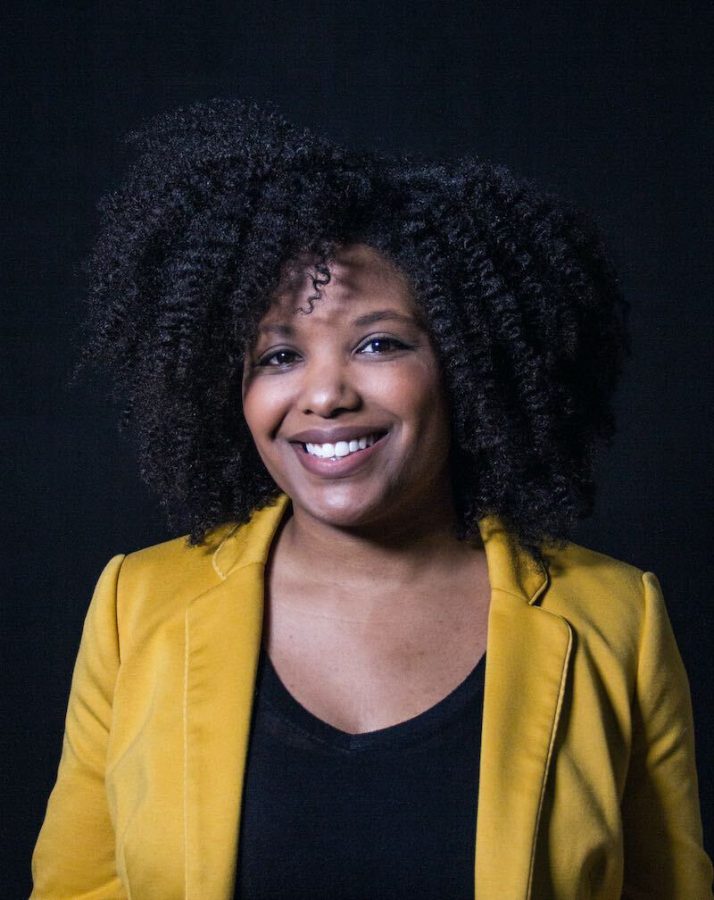Terresa Moses, an assistant professor in the College of Design challenged her students to take anti-racist approaches to design in a course first taught at the University of Minnesota last fall, the process of which is now being shown at the Goldstein Museum of Design.
Moses and her colleague, University of Illinois School of Art & Design assistant professor Lisa Mercer, created and launched the Racism Untaught course toolkit in 2018. The exhibit, which is only open to University staff, faculty and students, guides onlookers through the steps of the Racism Untaught framework as if they were participants.
Jean McElvain, the interim director and associate curator at the Goldstein, said the exhibit is unique because it looks specifically at intervention versus solely historical accounts of racism in design.
“It’s an issue that I think is difficult to discuss. Difficult, sometimes, to articulate. So if you have those key terms in front of you, it really allows you first of all to differentiate what the different issues are in a racialized design and be able to name them,” McElvain said. “So I think just putting a language to it is really helpful for me, and I think anybody who would visit.”
Corporations like PayPal and Target have adopted the Racism Untaught framework. First developed as an hours-long seminar, Moses and Mercer have since implemented the toolkit into semester-long courses at academic institutions. This course allows for a more in-depth analysis of racialized design, Moses said.
“I think [Moses] introduced something totally new to the College of Design,” said Jonathan Heu, a fourth-year student studying graphic design. “I think she offers a whole new perspective and I think every student in that class can say that they took something back.”
Moses and Mercer’s framework guides students through an introduction and five steps: onboarding, context, define, ideation, prototyping and impact. Over the course of 16 weeks, students analyze their own biases and redesign an existing racialized brand, such as Aunt Jemima or Mrs. Butterworth’s.
“The re-design for Aunt Jemima wouldn’t be enough to just remove her face,” Moses said. “It’s like, okay, how do we apologize for that? How do we recognize as an institution and an organization that we were okay with this for so long?”
After taking the course, Moses said she hopes students will recognize their agency in perpetuating racialized designs.
“That’s what my main goal is,” Moses said. “That students understand their agency in the positionality of racism, and that also it’s not impossible to create an anti-racist design approach. It is a hard conversation, but if you can commit to it, we can actually begin to change our culture and make a better world for everyone; liberate all the people who are oppressed and marginalized.”
Several students who took the class said it left them feeling empowered to recognize and stand up to racialized design.
“I can recall a time where [my group] had a moment of, ‘Who let this happen?’ and, ‘Why did no one step up to say something?’” said Grace Carlson, a third-year graphic design student. “We concluded that in big companies where there isn’t enough diversity, there is no space to have critiques like that; no one is there to offer that perspective.”
Heu also said that the course has had a large impact on his work.
“I feel like as a designer I want to make [a] good design that’s gonna positively impact people. And I want to make sure that, like, I’m learning and I’m continuing to grow,” he said.
Heu said he has taken other courses within the College of Design that focus on topics such as sustainability and consumerism, but this was the first course that was structured to explicitly discuss racism. Jack Wiese, a third-year graphic design student, voiced the same appreciation for the course.
“Many CDES courses do incorporate some kind of conversation, however it is not nearly enough to just ‘talk’ about it,” Wiese said in an email to the Minnesota Daily. “It’s important that all faculty are able to teach their students these lessons so that the next generation of designers don’t allow racism in design to persist. Real change starts with all of us.”



























Crickit615
Feb 4, 2021 at 10:54 am
Not just for African American’s but for Native Americans as well.
Olivia Toles
Feb 3, 2021 at 1:36 pm
awesome article!